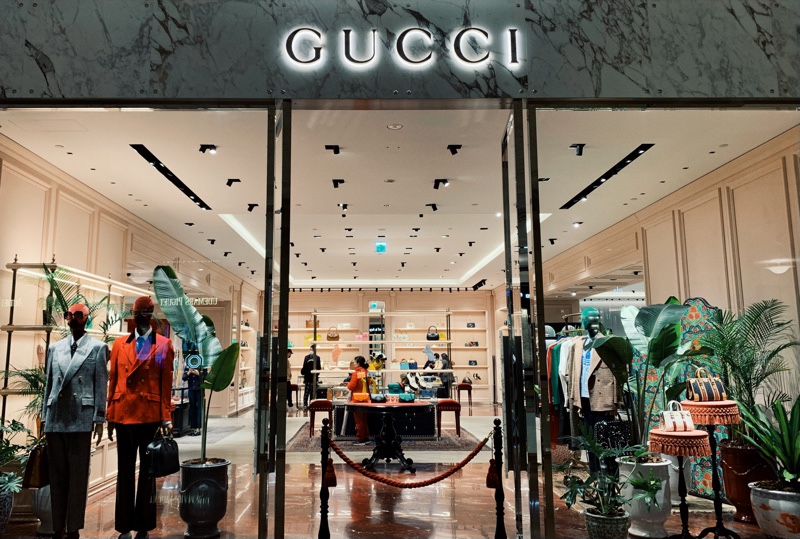Near the end of 2022, some big news hits the fashion industry. Since Designer Daniel Lee replaced Riccardo Tisci at Burberry, Alessandro Michele left Gucci, and Raf Simons closed his label. These designers’ movements show some earthquakes to fashion houses.
In the past decade, luxury houses appointed influenced designers as their creative directors to revive their brand identity and attract the younger generation, especially millennials. It seemed successful as their bold designs revamped the brand image and increased sales and social buzz. Some IT bags and profitable items came over the past ten years, such as fluffy pouch bags by Daniel Lee at Bottega Veneta and mule shoes or its Ace bee-embroidered leather trainers, which were by Alessandro Michele at Gucci.
However, a pandemic changes the game. Now some brands are struggling with slower growth due to different reasons. When the advantages of cooperation with influencers and super-star designers can no longer drive sales, also scandals start to hurt the historical fashion house’s reputation. Luxury brands must re-consider a new approach to maintain their heritage and balance the media impression. What kind of messages are behind these scenarios?
The recession is around the corner.
Most countries have started back to normal this year after two years of lockdowns and restrictions on travelling. However, the pandemic continues to affect the global economy from recovery. Also, geopolitical conflicts push higher energy costs, and the growing inflation rate in Europe will keep people focusing on their household spending than unnecessary goods.
Moreover, luxury brands have recently focused on the Chinese market to expand their sales. The Chinese accounted for 21% of the world’s personal luxury goods market, behind North America and Europe, according to consultancy Bain & Co. It is expected to become the top market by 2025. However, According to McKinsey’s report, the Covid-19 pandemic remains the biggest risk in Greater China. It still has a long way to go towards lifting the restriction and recovering the economy and consumption, both inside the country and travelling abroad.
Additionally, the surveyed jobless rate for those aged 16-24 hit a record high of 19.9% in July, according to the National Bureau of Statistics in China. As most luxury brands have targeted young Chinese consumers in recent years, it can be an issue, said Ben Cavender, director of the China Market Research Group.
Therefore, essentials become the keywords for consumers, even young people, which is also reflected in holiday sales results as people are looking for something that is a real bargain and can be kept longer.
Scandals hurt the brand’s heritage.
Famous designers or influencers have become a phenomenon to present a stronger personal image than the brand itself. It helps catch the public’s attention but sometimes distracts people from the brands themselves.
However, brand value and reputation are more important than ever since people look for the right thing. Information can now be easily accessed, so controversy has spread more quickly than ever. And boycott and cancel culture to push these brands to be aware of their speaks and any operations.
For example, when the rapper Ye’s (used to known as Kayne West) anti-Semitic speech pushed Adidas to give up the significant profits from the collaboration with him. In the longer term, brands must take action to prevent further damage to the brand reputation and the bigger loss of customers.
In contrast, brands still need some stimulation to keep the public’s attention—collaborating with influencers and celebrities has worked well so far. To avoid putting all risks together by focusing on one particular person, Chanel can be the reference to put several brand ambassadors simultaneously to increase brand awareness but keep its brand’s value.
Also, Bottega Veneta tries to keep some bold elements like BV green from Daniel Lee but embraces more legacy from the brand’s heritage, like *intrecciato* woven leather pattern to make people focus on their classic elegance.
Consumers need something new.
But consumers still need something fresh and interesting to stimulate their desire. After a couple of years of trends hitting the fashion industry, like simple minimalist, maximalist aesthetics or street style, people feel tired of them and start to seek new ideas for showing themselves. That can be the reason why Y2K has hit the market since last year.
In other scenarios, emerging brands come into the industry with a much more affordable price between luxury brands and affordable luxury, with their specific design and sustainable ideas to bring some new respect for the market. Customers now look for fresh ideas to match their personalities. So we can see Ganni, Jacqumus, Simone Rocha, Peter Do, and other young designers become popular. They present unique styles of sexy, romantic, razor-sharp tailoring or architectural construction.
Furthermore, when customers no longer rely on luxury brands to show their status but also prefer to remix different elements to show themselves. What kind of brand value can offer from these historical fashion houses is the most important thing to consider.
To conclude, many uncertain issues affect fashion houses; the world is full of tension. The economy is in limbo; consumers desire more stimulation; too much information to keep the brand’s heritage and reputation. For legacy brands to keep their historical value but to transfer another fresh image to a new generation to keep the brands sustainable, these are all challenges.

發佈留言